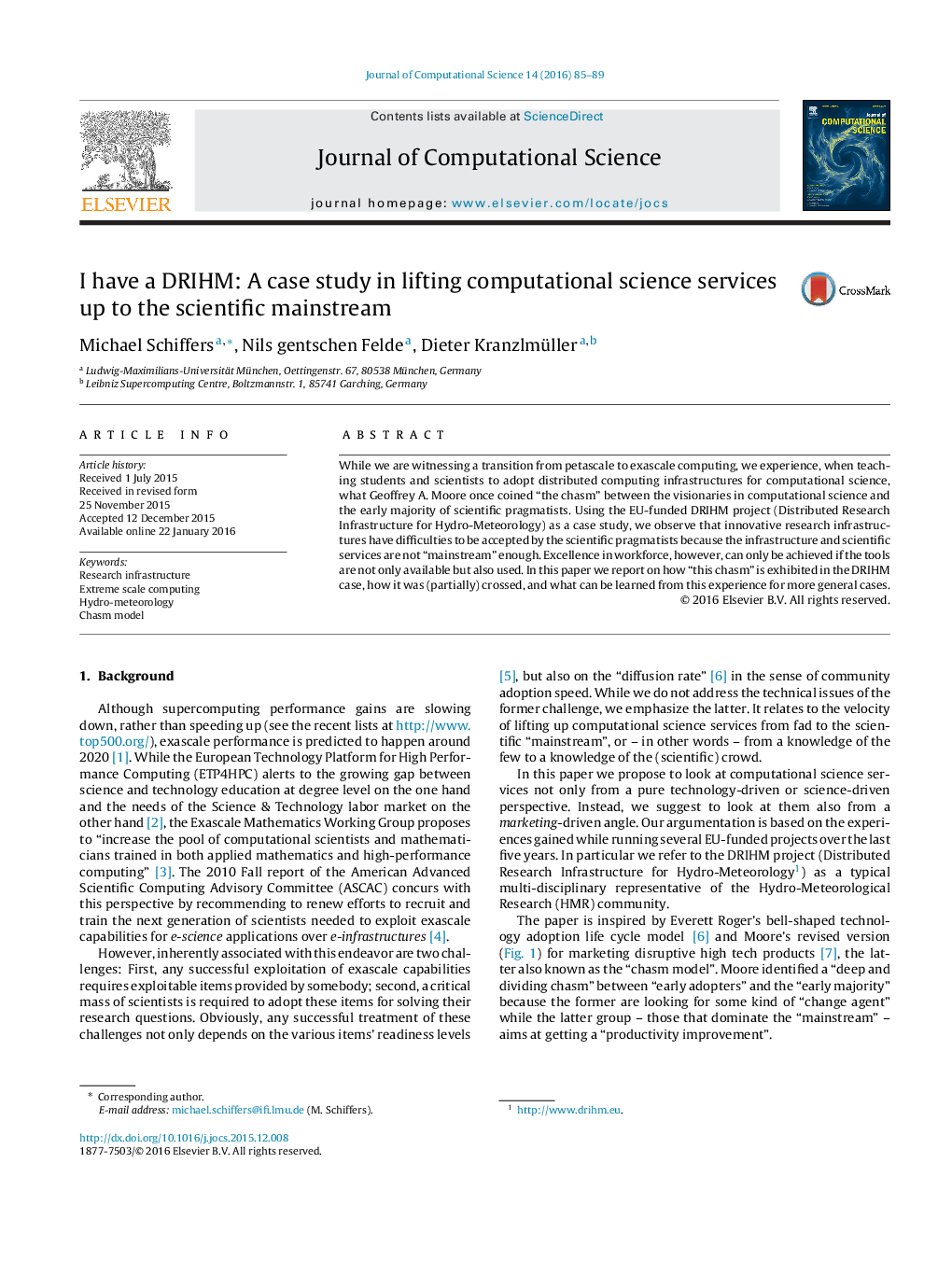| Article ID | Journal | Published Year | Pages | File Type |
|---|---|---|---|---|
| 430045 | Journal of Computational Science | 2016 | 5 Pages |
•We propose to apply the chasm model to overcome the computational science talent gap.•We report on experiences to cross the chasm in the DRIHM project.•We propose ways to cross the chasm.
While we are witnessing a transition from petascale to exascale computing, we experience, when teaching students and scientists to adopt distributed computing infrastructures for computational science, what Geoffrey A. Moore once coined “the chasm” between the visionaries in computational science and the early majority of scientific pragmatists. Using the EU-funded DRIHM project (Distributed Research Infrastructure for Hydro-Meteorology) as a case study, we observe that innovative research infrastructures have difficulties to be accepted by the scientific pragmatists because the infrastructure and scientific services are not “mainstream” enough. Excellence in workforce, however, can only be achieved if the tools are not only available but also used. In this paper we report on how “this chasm” is exhibited in the DRIHM case, how it was (partially) crossed, and what can be learned from this experience for more general cases.
